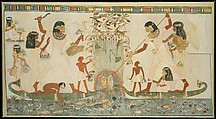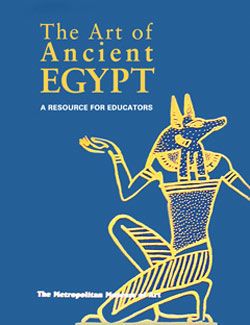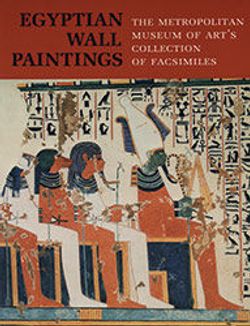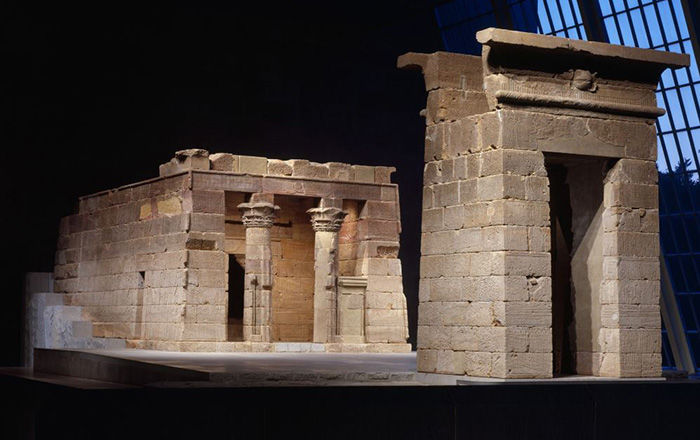Menna and Family Hunting in the Marshes, Tomb of Menna
Twentieth Century; original New Kingdom
Copied from an original executed in painted plaster on the north wall of Menna's tomb chapel, this facsimile depicts the tomb owner fishing and fowling in the papyrus marshes. To viewer left, Menna holds decoy birds in one hand and raises a throwstick above his head with the other. On the right, he uses a long spear to catch two large fish, most likely Tilapia. In both vignettes, he is poised on the deck of a papyrus skiff, into which members of his family (unnamed here, but probably his wife and several of his children) have crowded. Both the papyrus thicket between the two figures of Menna and the water beneath his boats are teeming with wildlife, including birds, fish, even a crocodile and a small cat, the latter of which climbs up a papyrus stalk, hoping to catch one of the migratory birds that flies above.
As they lay on the fringes of the Nile Valley, the marshes were considered liminal zones and the untamed creatures that inhabited them were identified with the enemies of maat, the proper order of the cosmos. By defeating these enemies, Menna was helping to ensure the maintenance of the Egyptian world. At the same time, this scene is rife with erotic overtones -- women wearing diaphanous dresses and holding lotuses, which are symbols of fertility; Tilapia, fish that carry their young in their mouth and thus also were linked with regeneration; and waterfowl such as ducks and geese, symbols of abundance and also mythologically tied to Egyptian creation stories. Thus Menna also helps to guarantee the daily re-iteration of creation and his own regeneration and rebirth.
This image cannot be enlarged, viewed at full screen, or downloaded.



